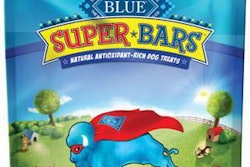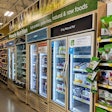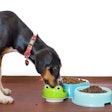
Increasing household penetration forms the foundation for Blue Buffalo’s ultimate goal to reach more pet owners and continue growth online and in stores, especially sales in food, drug and mass market (FDM) retailers, Billy Bishop, president of General Mills’ pet segment, said at the Consumer Analysts Group of New York Conference. In 2018, Blue Buffalo’s presence in U.S. households increased more quickly than previous years.
“Household penetration is the first things we look at to measure progress,” he said.
In 2015, household penetration stood at 4.8 percent, according to IRi market research presented by Bishop. That number grew steadily through 2017 to reach 6.2 percent. Then in 2018, Blue Buffalo’s household penetration increased 35 percent to 8.4 in 2018. The rise was particularly strong in recent months, Bishop said.
Blue Buffalo pet food sales growth in food, drug and mass market
Pull quote -“The Blue business objective is very simple, we want to reach more pet parents and feed more pets. “
Blue Buffalo’s household penetration growth accompanied the company’s FDM expansion, which the company plans to further increase by the end of 2019. In August 2017, Blue Buffalo began selling in four FDM retailers: Target, Kroger, Publix and Meijer.
Blue Buffalo’s retail sales stood at US$13.8 million on Dec. 2, 2017. By May 19, 2018, sales had risen to US$18.8 million. As of Nov. 3, 2018, Blue Buffalo retail sales hit US$26 million. Many of those sales were to new customers.
“In fact, consumer research shows that roughly 75 percent of FDM buyers are new to the brand,” Bishop said.
Among the first four FDM retailers to offer Blue Buffalo, sales grew 11 percent from August 2018 to November 2018, according to Nielsen and IRI data from Kroger, Target, Publix and Meijer. Blue Buffalo’s market share reached 8 percent.
Blue Buffalo pet food retail sales channels
Within the FDM channel, Blue Buffalo is the fastest growing brand, Bishop said. Yet, Blue Buffalo still has opportunities for growth in the pet specialty and e-commerce channels, Blue Buffalo is positioned
Blue Buffalo’s retail sales by channel:
- Pet specialty – 55 percent
- E-commerce – 24 percent
- FDM – 21 percent
“The Blue business objective is very simple, we want to reach more pet parents and feed more pets. Our primary focus in the near term is growing market share in the U.S. And we’ll explore expanding our international presence over time.”
Bishop listed Blue Buffalo’s four strategies to deliver that increase in household penetration among U.S. pet owners.
- Focus on young pets, young pet owners
- Drive awareness with pet owners and influencers
- Make Blue more available
- Increase share of wet foods and treats
To reach those young pet owners and social media influencers, along with others, Blue Buffalo has spent US$1 billion on brand building since 2003.


















